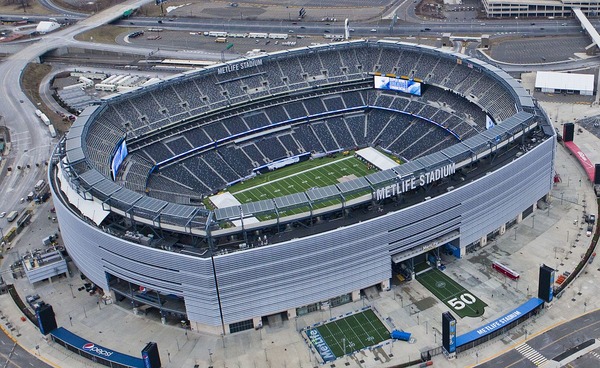The conversation about who pays the bill for new NFL stadiums made news this week as the Jacksonville Jaguars’ front office recently began negotiations with city officials about renovating TIAA Bank Field. The public-private investment includes the construction of a mixed-use neighborhood in the stadium district. The proposal could exceed $2 billion. This proposal is not the only project over the last 20 years to exceed $1 billion for new NFL stadiums. The $1B threshold is now becoming the norm for such projects.
Since 2000 twety new NFL stadiums have seen construction. The financing models of these stadiums have varied. Just four stadiums having been primarily privately funded; the rest have relied upon public financing. Who pays the bill is always a topic of concern and increasingly becoming more and more contentious as costs skyrocket.
Private Financing for a New NFL Stadium
MetLife Stadium is home to the New York Giants and New York Jets (yes, located in New Jersey). Like AT&T Stadium (Dallas Cowboys) both been privately financed. Levi’s Stadium (San Franscico 49ers) and Lucas Oil Stadium (Indianapolis Colts) also chose to prioritize private financing. Whether due to potentially facing backlash in their local communities, or the wish to have more control over stadium amenities and revenue streams, private financing also reduces the tax burden on citizens. Three of the four stadiums cited above cost over $1 billion; MetLife at $1.6B, AT &T at $1.3B and the Falcon stadium, Mercedes-Benz, at $1.5B.

All the other NFL stadium have been publicly financed, as local city and state taxpayers’ dollars are used. Some recent stadiums publicly funded stadiums include State Farm Stadium (Arizona Cardinals), Ford Field (Detroit Lions), NRG Stadium (Houston Texan) and U.S. Bank Stadium (Minnesota Vikings).
Threats to Relocate team
So, what happens when cities decline to assist with stadium financing? The classic response is to threaten to relocate. Teams like the Chargers, Rams, and Raiders have all moved out of their longstanding areas after failing to secure ideal stadium deals. The Oakland Raiders twice tried to get the city of Oakland to build a new stadium, but the city refused. The Raiders got a from the city of Los Angeles in the 1980s, and then left Los Angeles for Las Vegas, their current home, after procuring a more lucrative deal
The city of Cleveland refused to build a new stadium for the Browns in the 1990s, so the team took advantage of a deal offered by Baltimore and moved — leaving Cleveland behind to become the Ravens. Eventually, Cleveland’s fans missed the Browns and the city built a new stadium — coaxing the NFL to add a new Cleveland Browns franchise a few years later.
The Rams left Cleveland, Los Angeles, Anaheim, and St. Louis at one time or another — each time over stadium issues to get a better deal somewhere else. The Rams are now back in Los Angeles.
Sales Pitches for New NFL Stadiums
One other pitch for building a new stadium by owners to the local community is that it offers economic benefits to the region. Extensive research continuously to be performed on this subject. Almost all the studies unanimously have found little economic boost from stadiums at all. The threat of relocating a team is also becoming less convincing with the saturation of the sport. There are now 32 teams, how many cities could be viable alternatives to the team’s existing home?
Size of new NFL stadiums
Of interest is the size of the new NFL stadium. Teams make their money from a combination of ticket sales and television revenue. NFL blackout rules state that the home team’s games are blacked out in the local market if the game isn’t a sellout 72 hours before kickoff. For many organizations, the ir seems to be sweet spot. Maximizing sales of tickets versus television blackout concerns seems to be having stadiums with seating for 65,000 people. Any more than that seems to be a liability.
Jaguar owner Shad Khan and his executives have begun negotiating a renovation with the city of Jacksonville. Improvements are expected in the $1.2 billion to $1.4 billion range. Khan is asking for the city to pay $800 to $934, or nearly two-thirds of the project. It will be interesting to see how this plays out and how the community of Jacksonville responds.
Barry Schustermann
Follow me on X @ BarrySchust
Follow me on Facebook @Barry Schustermann



